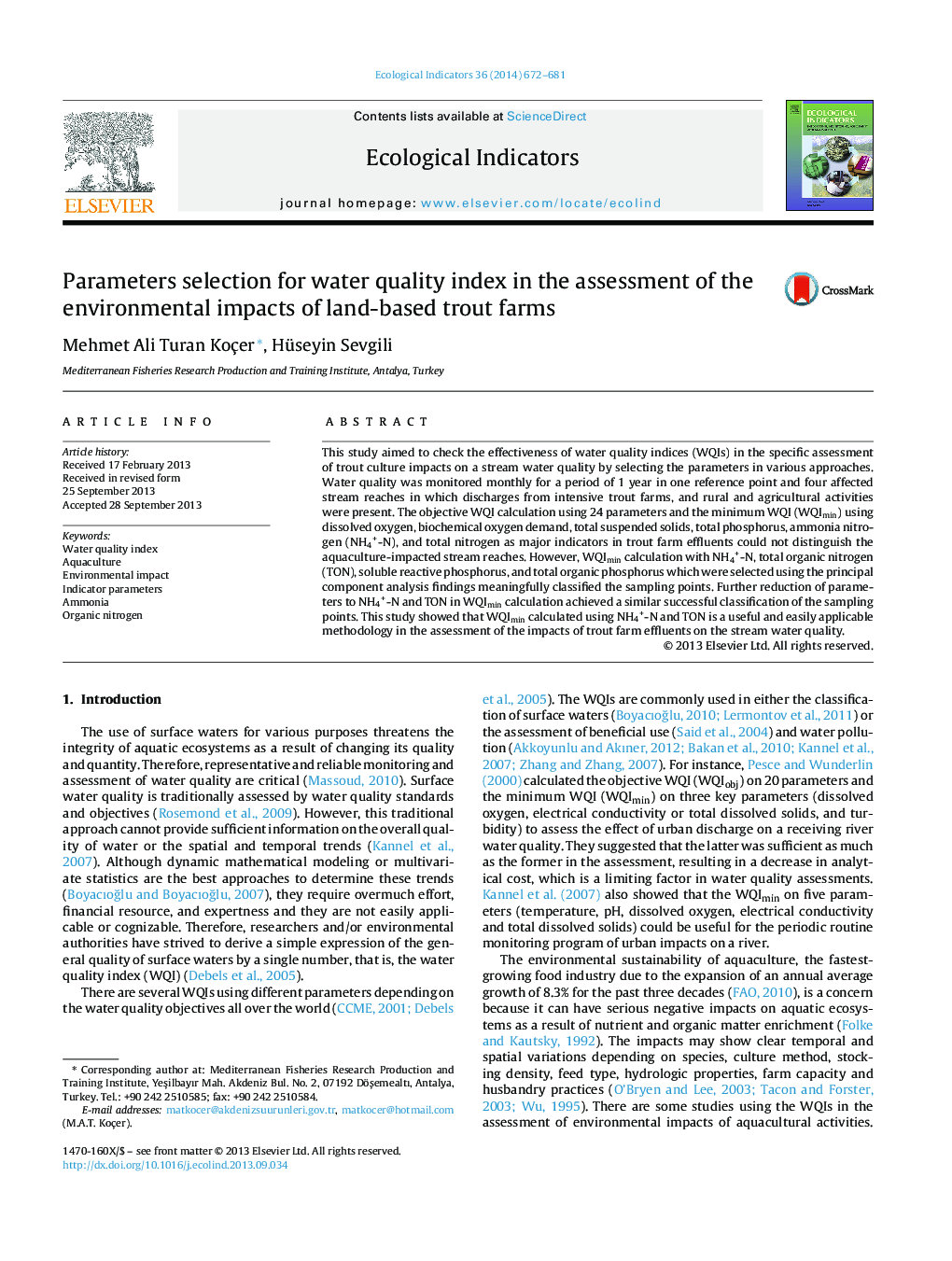| Article ID | Journal | Published Year | Pages | File Type |
|---|---|---|---|---|
| 4373363 | Ecological Indicators | 2014 | 10 Pages |
•Water quality indices were tested for assessment of the impacts of trout culture.•A combination of multivariate analysis and linear regression was used in the parameter selection.•The combination effectively allowed us to select right indicator parameters.•Ammonia, organic nitrogen, reactive phosphorus and organic phosphorus were identified as the indicators.•Ammonia and organic nitrogen were more representative parameters of aquaculture impacts than the others.
This study aimed to check the effectiveness of water quality indices (WQIs) in the specific assessment of trout culture impacts on a stream water quality by selecting the parameters in various approaches. Water quality was monitored monthly for a period of 1 year in one reference point and four affected stream reaches in which discharges from intensive trout farms, and rural and agricultural activities were present. The objective WQI calculation using 24 parameters and the minimum WQI (WQImin) using dissolved oxygen, biochemical oxygen demand, total suspended solids, total phosphorus, ammonia nitrogen (NH4+-N), and total nitrogen as major indicators in trout farm effluents could not distinguish the aquaculture-impacted stream reaches. However, WQImin calculation with NH4+-N, total organic nitrogen (TON), soluble reactive phosphorus, and total organic phosphorus which were selected using the principal component analysis findings meaningfully classified the sampling points. Further reduction of parameters to NH4+-N and TON in WQImin calculation achieved a similar successful classification of the sampling points. This study showed that WQImin calculated using NH4+-N and TON is a useful and easily applicable methodology in the assessment of the impacts of trout farm effluents on the stream water quality.
